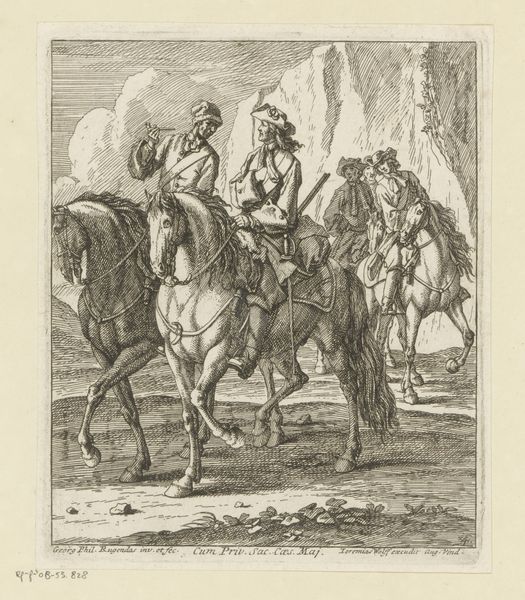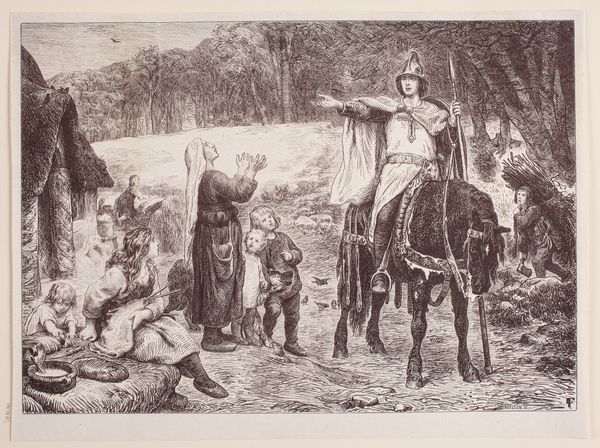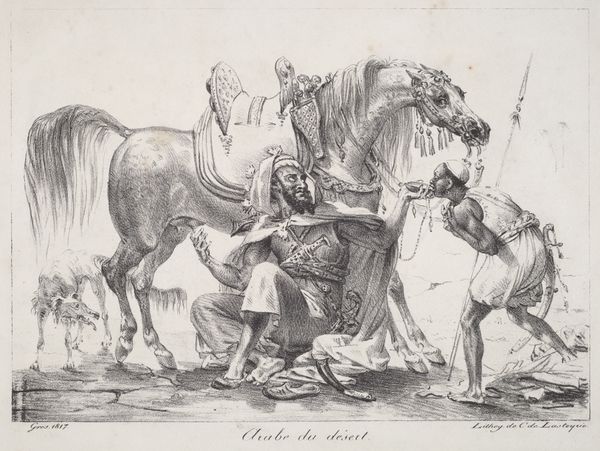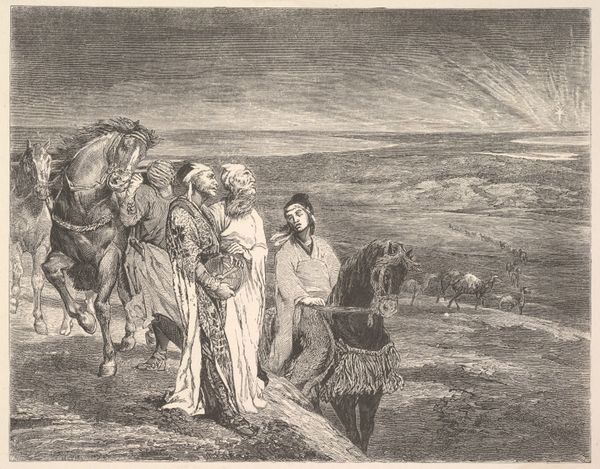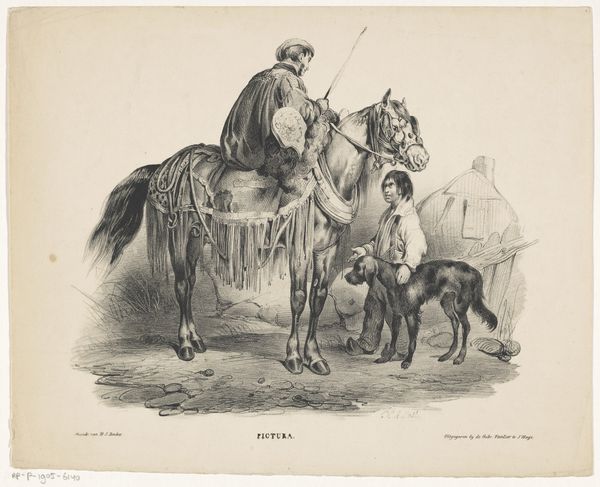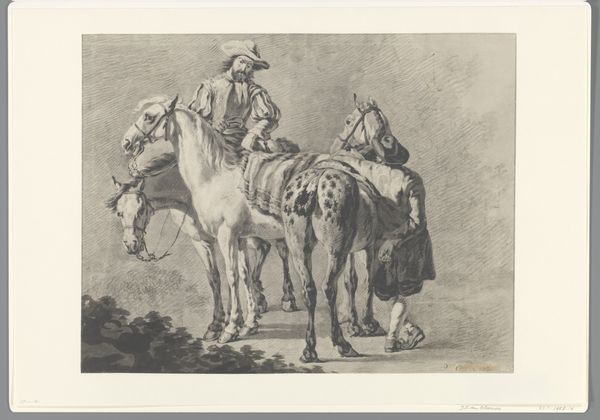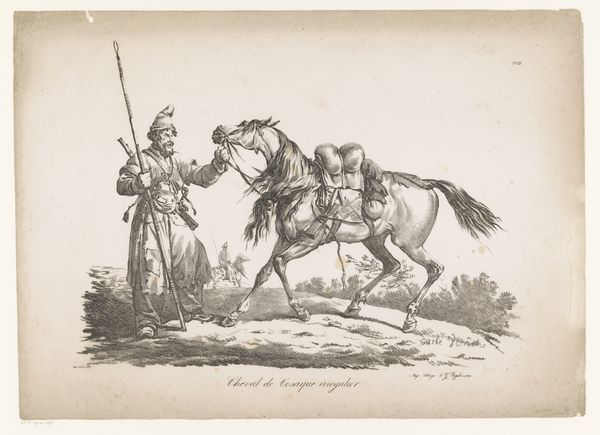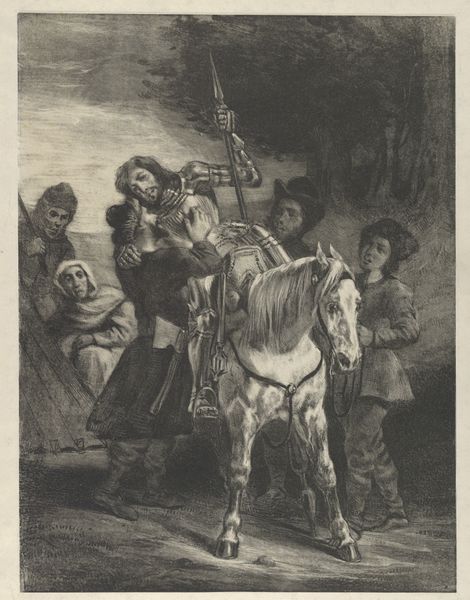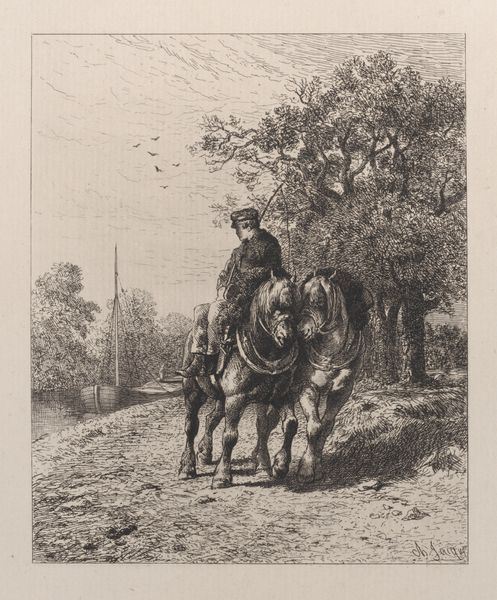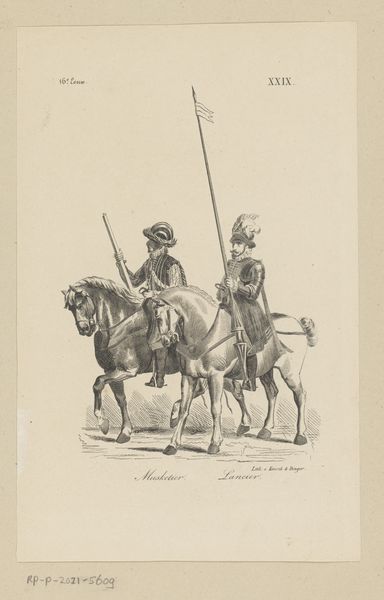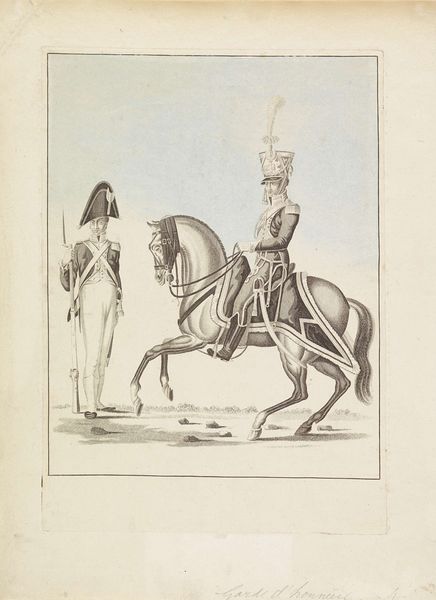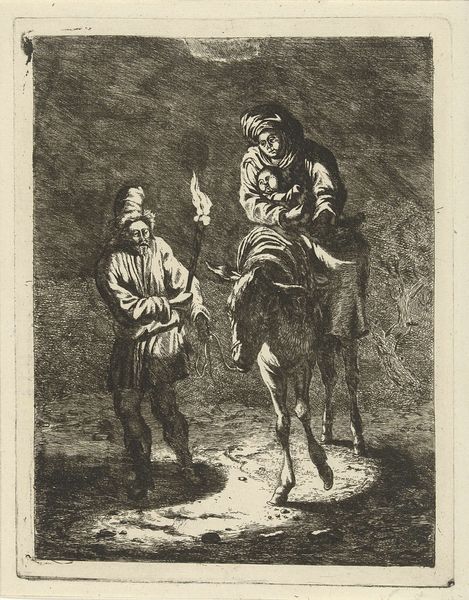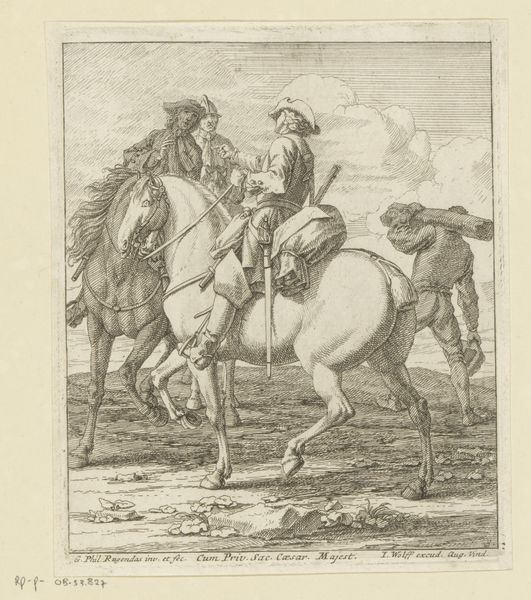
print, engraving
#
portrait
# print
#
romanticism
#
orientalism
#
line
#
genre-painting
#
engraving
Copyright: National Gallery of Art: CC0 1.0
Editor: This is "Arab Mounting," an engraving by Théodore Chassériau from 1849. The stark contrast and fine lines create such a compelling image. It seems to capture a quiet dignity, almost a poised expectation. What strikes you most when you look at this piece? Curator: I see a dance of cultural memory played out through potent symbols. Consider the horse, a recurring emblem of power and nobility across countless societies. Here, it is rendered with a nervous energy through Chassériau’s lines, yet restrained under the control of its rider, the Arab horseman. Does that tension speak to you? Editor: Yes, the contrast is powerful! And the figure standing next to the horse--what does he represent? Curator: The figure at the horse’s head is equally telling. He represents a connection between land and leadership. Note how Chassériau contrasts their garments. The standing figure, draped and grounded, against the elevated horseman whose robe suggests movement and the flow of power. What emotional associations does that evoke in you? Editor: It brings to mind the complex relationships of control and respect within a culture, and perhaps the exoticized lens through which Europeans viewed the Arab world in the 19th century. Curator: Precisely. And isn't that the lingering power of Orientalist art? It shows us as much about ourselves, and our historical gaze, as it does about the cultures it seeks to portray. Editor: It's fascinating to consider the cultural layers within this single image. Thank you for sharing your insights, it has certainly provided a deeper perspective on this print. Curator: And thank you. Observing art together always unlocks new ways of seeing.
Comments
No comments
Be the first to comment and join the conversation on the ultimate creative platform.
